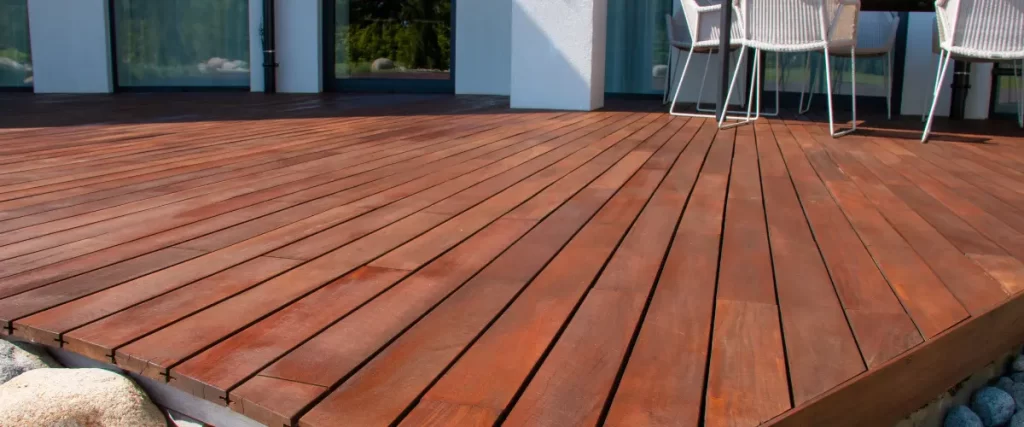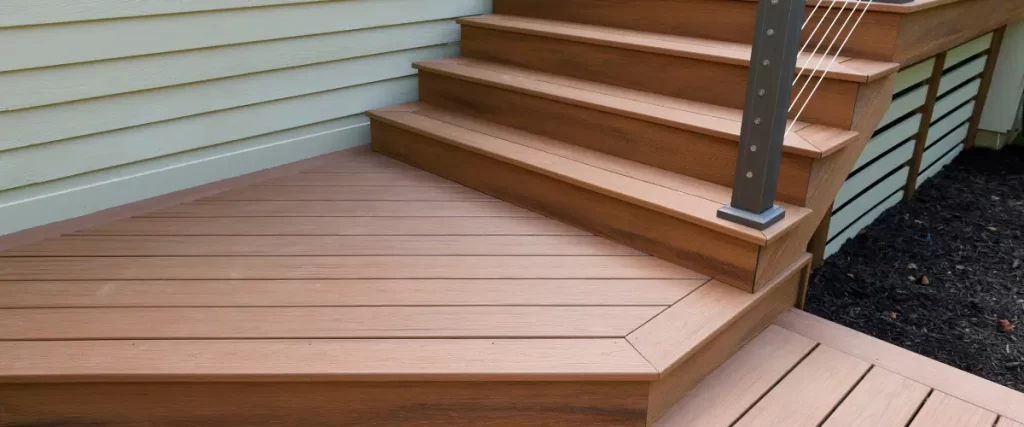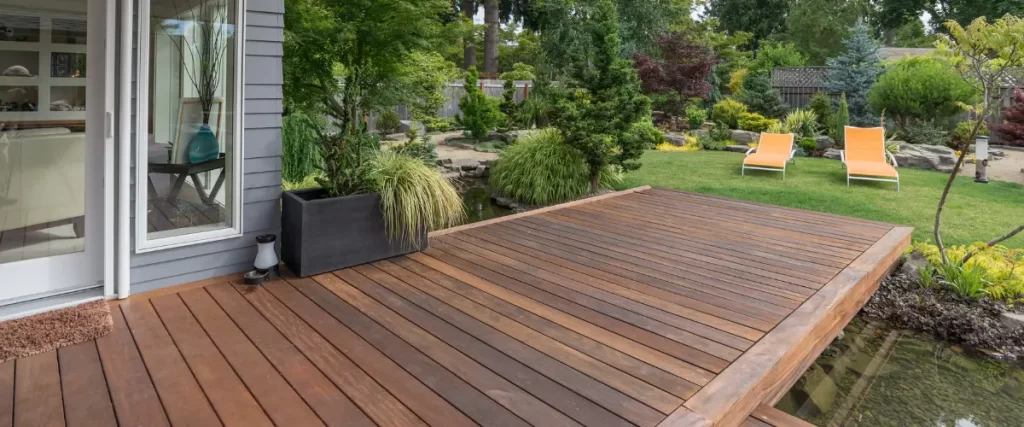When you live in a place as rich in character as Old North Knoxville, home projects aren’t just about adding value—they’re about preserving history. One of the most popular upgrades for homeowners here is the addition of a deck.
But if you own a historic property, you already know: it’s not as simple as picking out lumber and getting to work.
Adding a deck to a historic home in Old North Knoxville requires a delicate balance of modern lifestyle and architectural integrity. And if you’re reading this, chances are you’re trying to figure out how to walk that line confidently and legally—without sacrificing aesthetics, charm, or resale value. You’re in the right place.
Let’s dive deep into everything you need to know to plan a compliant, beautiful, and lasting deck addition for your historic home.

Why Deck Additions Are Popular in Old North Knoxville
Old North Knoxville isn’t just a neighborhood—it’s a lifestyle. With its tree-lined streets, front porches, and early 20th-century architecture, this part of the city is a living museum of Victorian, Queen Anne, and Craftsman-style homes.
As a homeowner here, you probably appreciate that sense of timelessness. But at the same time, you want the convenience and comfort of modern outdoor living. A deck offers just that—more space for entertaining, relaxing, and enjoying East Tennessee’s mild seasons.
But here’s the catch:
Unlike newer neighborhoods, homes in Old North Knoxville are often protected by local preservation guidelines and historical overlays. That means you can’t just throw up a composite platform and call it a day.
Understanding Historic Overlay Requirements in Knoxville
Old North Knoxville falls under a Historic Overlay District, managed by the Knoxville Historic Zoning Commission. This commission is tasked with preserving the unique architectural fabric of the neighborhood.
If your home is within this district, any exterior changes, including decks, must be reviewed and approved through a Certificate of Appropriateness (COA).
What Does That Mean for You?
Design matters. Your deck needs to reflect the architectural style of your home.
Materials matter. Not all wood or composite materials will be approved.
Placement matters. Rear-facing decks are often preferred to preserve the street-facing aesthetic.
Size matters. The deck should be proportional and not overpower the historic structure.
Skipping these steps could result in fines, denial of future permits, or worse—being forced to tear down the structure. So yeah, it pays to do it right from the start.
Designing a Deck That Honors Your Home’s Historic Style
Every historic home has a personality. Whether your house leans toward the Craftsman aesthetic with exposed rafters and tapered columns or it’s more Queen Anne with intricate woodwork and asymmetrical shapes, your deck addition should complement—not clash with—those defining features.
Design Considerations to Keep in Mind:
Keep it simple and consistent. Clean lines and a restrained approach often blend better with older homes.
Mimic existing details. Use railing styles, posts, and trims that echo the home’s original design.
Mind the transitions. Use stairs, railings, and landscaping to integrate the deck with the home and yard.
Prioritize natural materials. Wood—especially treated pine or cedar—is usually preferred over synthetic options.
If you’re unsure whether your vision will pass the commission’s standards, we recommend reviewing the Design Guidelines for Historic Districts provided by the city.
Permitting & Approval Process: How It Works
Here’s the short version of what you’ll need to do before you break ground:
Consult with the Knoxville Historic Zoning Commission.
This can help you understand what’s likely to be approved before you invest in plans or materials.
Apply for a Certificate of Appropriateness (COA).
You’ll submit designs, materials, and placement details. Be prepared for a review period.
Secure a building permit from the City of Knoxville.
Even with a COA, you’ll still need a standard building permit. The City of Knoxville’s Building Permits & Inspections Division handles this.
Schedule inspections.
As with any build, city inspectors will check in to ensure everything is to code.
Yes, it’s a process—but it’s a manageable one when you’re informed.

Local Climate & Material Choices for Durability
Knoxville’s climate features hot, humid summers and cool winters, with plenty of rainfall in between. Your deck needs to be able to withstand seasonal changes without warping, cracking, or fading.
Ideal Materials for Historic Decks in Knoxville:
Pressure-treated Southern Yellow Pine: Readily available and historically accurate.
Cedar: Naturally resistant to insects and rot; has a timeless look.
Ipe (Brazilian hardwood): Dense, durable, and resistant to moisture—though pricier.
Tongue-and-groove flooring: Often used for porches and can be adapted for decks if adequately sealed.
Avoid bright, plastic-looking composites or metals that clash with the historic aesthetic—those are red flags for the zoning commission.
The Best Decking Material Manufacturers for Historic Homes
When sourcing materials for your deck, you want products that are reliable, durable, and appropriate for historic aesthetics. These top manufacturers offer just that.
Top Decking Material Manufacturers for Historic Homes:
TimberTech: Offers composite materials with wood-like finishes ideal for rear-facing historic home decks.
AZEK: Known for its high-end capped polymer decking that resists moisture and mimics painted wood.
Trex: One of the most trusted names in composites, with natural grain patterns and rich, classic colors.
Real Cedar: Specializes in Western Red Cedar, a premium choice for historical accuracy and longevity.
YellaWood: Pressure-treated pine designed for Southern climates—budget-friendly and historically consistent.
FAQ: Historic Deck Additions in Old North Knoxville
Can I build a front-facing deck on my historic home?
It’s rare, but not impossible. The Historic Zoning Commission usually prefers rear-facing or side decks to preserve curb appeal.
How long does it take to get a COA?
Most COA applications take 3–4 weeks, depending on the complexity of your design and the timing of the next commission meeting.
Will adding a deck hurt my home’s historic status?
Not if done correctly. A well-designed, approved deck can actually enhance the livability and value of your home without compromising its integrity.
Do I need an architect to design the deck?
It’s not required, but having plans drawn by someone familiar with historic guidelines can speed up the approval process.
What if my deck was already added without approval?
You’ll need to apply retroactively, and the city may require alterations. It’s better to go through the proper channels from the start.

Wrap-Up: Building a Deck That Respects the Past and Enhances the Present
Your historic home in Old North Knoxville is more than just a property—it’s a piece of the city’s story. When you add a deck, you’re not just building an outdoor space; you’re contributing to the legacy of the neighborhood.
By respecting architectural codes, choosing historically appropriate materials, and working with local guidelines, you can have the best of both worlds: modern outdoor living and timeless beauty.
Have questions about adding a deck to your historic home?
Contact us at (865) 801-4545 and let’s talk about how to bring your deck building project to life the right way—charm, compliance, and all

